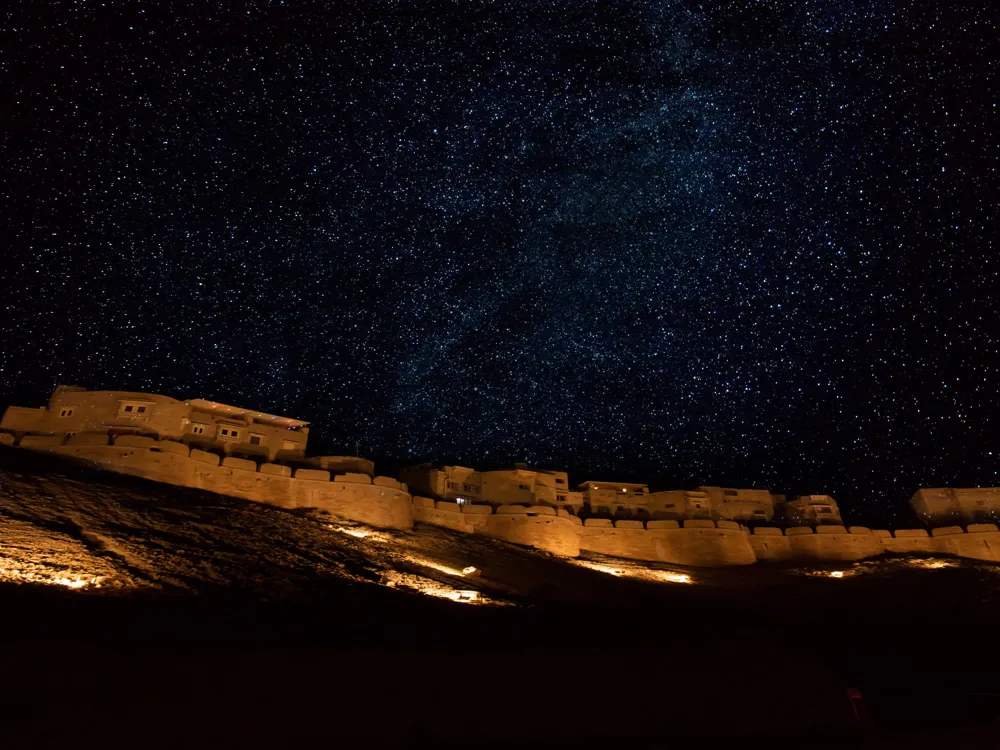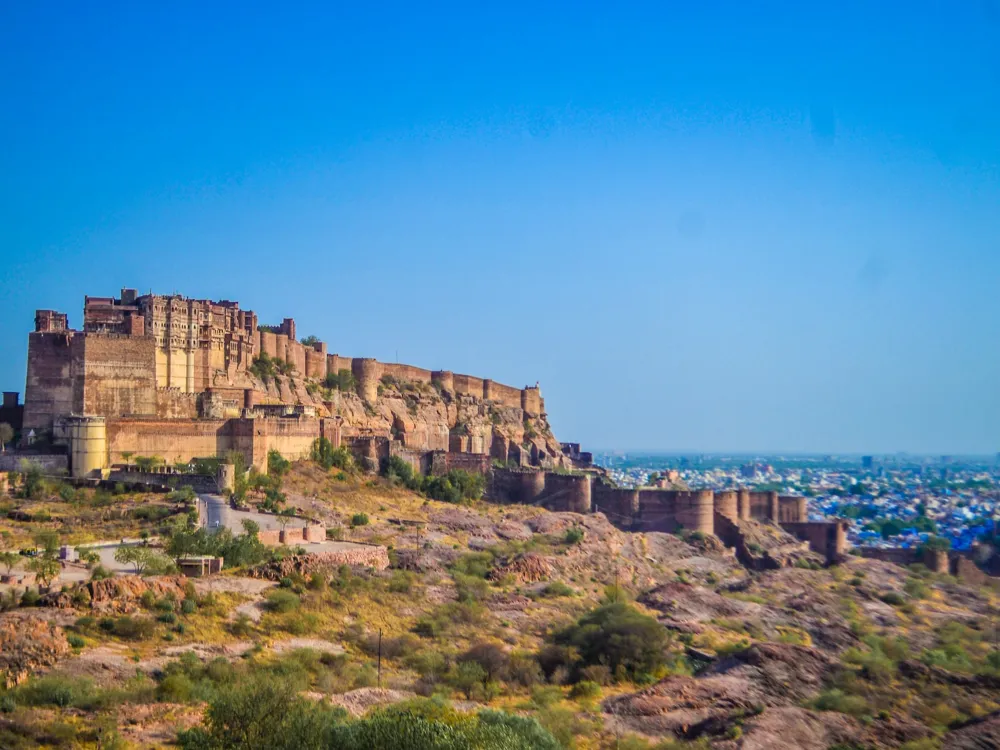Sri Laxminath Temple, located in the heart of Bikaner, Rajasthan, is a beacon of spirituality and heritage. This temple, dedicated to Lord Vishnu and Goddess Laxmi, has been a significant pilgrimage site for centuries. The temple's history dates back to the 1500s, established by Rao Lunkaran, and later developed by Maharaja Ganga Singh. It stands as a testament to the religious devotion and architectural ingenuity of its time. The temple's architecture is a blend of Mughal and Rajput styles, reflecting the cultural amalgamation prevalent during its construction. The intricate carvings, magnificent domes, and stunning frescoes narrate tales of devotion and artistry. The main sanctum, enshrining the idols of Lord Vishnu and Goddess Laxmi, exudes a sense of divine presence, drawing devotees from all walks of life. The temple complex also includes various shrines dedicated to other Hindu deities, embodying the essence of Hindu philosophy – unity in diversity. Apart from its religious significance, Sri Laxminath Temple is a hub for cultural activities, especially during festivals like Diwali and Janmashtami. The temple premises light up with decorations, and the air fills with chants and hymns, providing a surreal experience to visitors. The temple's role in Bikaner's social and cultural fabric is undeniable, making it a must-visit destination for those seeking spiritual solace and cultural richness. The architecture of Sri Laxminath Temple is a remarkable blend of historical and artistic elements, representing the zenith of Rajasthani temple architecture. The temple's structure is a masterpiece, featuring Rajputana styles combined with Mughal influences, creating a unique visual spectacle. The temple is adorned with intricate marble carvings, ornate pillars, and lavishly decorated ceilings, each telling a story of the craftsmen's unparalleled skill. One of the most striking features of the temple is its main entrance, characterized by detailed carvings and traditional motifs, welcoming visitors into a world of spiritual and architectural wonder. The main sanctum, with its awe-inspiring idols of Lord Vishnu and Goddess Laxmi, is surrounded by smaller shrines and pavilions, each embellished with detailed frescoes and murals depicting scenes from Hindu mythology. The temple's layout follows the ancient Vastu Shastra principles, ensuring a harmonious balance of the five elements. The use of local red sandstone and marble in construction not only adds to the aesthetic beauty but also reflects the temple's geographical identity. The temple's towering shikhara (spire), visible from afar, is an iconic part of Bikaner's skyline, symbolizing a spiritual guide for the devotees. Visitors are advised to dress conservatively, covering shoulders and knees, as a sign of respect to the temple's sanctity. Photography may be restricted in certain areas of the temple. It's advisable to check with temple authorities beforehand. Be aware of the temple timings and scheduled rituals to plan your visit accordingly and partake in the spiritual experience. As a place of worship, it's important to maintain a respectful demeanor and be mindful of local customs and traditions. Footwear must be removed before entering the temple premises, as per Hindu temple customs. Sri Laxminath Temple is easily accessible from various parts of Rajasthan. The nearest airport is the Jodhpur Airport, from where you can hire a taxi or take a bus to Bikaner. Bikaner is well-connected by rail with major cities like Delhi, Mumbai, and Jaipur. On reaching Bikaner, one can find local transportation like auto-rickshaws and cabs to reach the temple. For those driving, Bikaner is connected via well-maintained roads to all major cities in Rajasthan. Read More:Overview of Sri Laxminath Temple, Bikaner, Rajasthan
Architecture of Sri Laxminath Temple
Tips When Visiting Sri Laxminath Temple
Dress Appropriately
Photography Restrictions
Timings and Rituals
Cultural Sensitivity
Footwear Policy
How To Reach Sri Laxminath Temple
Sri Laxminath Temple
Bikaner
Rajasthan
₹ 15,250 onwards
View bikaner Packages
Bikaner Travel Packages
View All Packages For Bikaner
Top Hotel Collections for Bikaner

Private Pool

Luxury Hotels

5-Star Hotels

Pet Friendly
Top Hotels Near Bikaner
Other Top Ranking Places In Bikaner
View All Places To Visit In bikaner
View bikaner Packages
Bikaner Travel Packages
View All Packages For Bikaner
Top Hotel Collections for Bikaner

Private Pool

Luxury Hotels

5-Star Hotels

Pet Friendly





















